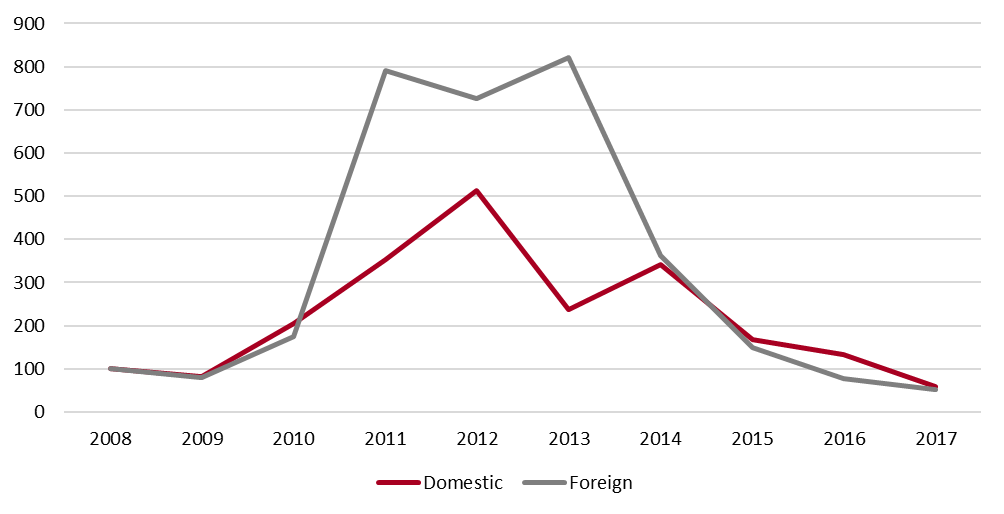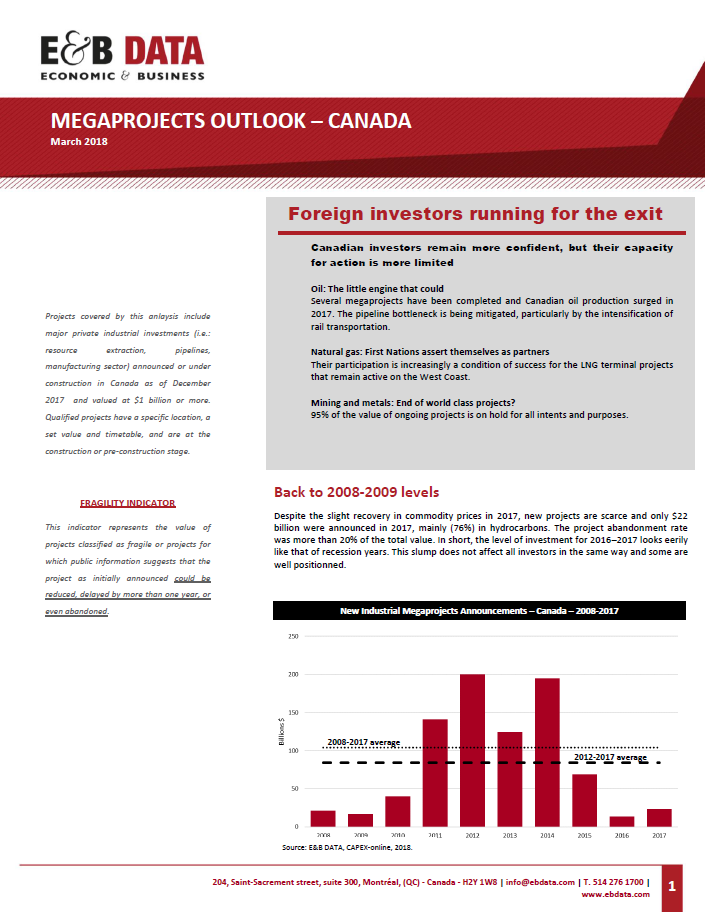But where are the investors?Foreign investment in Canadian industrial sectors in 2017 was 10% of the peak level of 2013. Although the decline was largely limited to extractive industries prior to 2017, it is now affecting the manufacturing sector as well. Could this be the result of the looming US tax reform and increasing commercial threats from the United States? Foreign investors: in free fall Industrial investment in Canada, as determined based on investment announcements, shows a sharp drop in foreign direct investment—and more specifically, in capital expenditures. In fact, foreign investment in Canada in 2017 was 10% of the peak level of 2013 in the industrial sectors. Value of Announced Industrial Investment in Canada – 2008–2017 Source: Value of announced capital expenditures. CAPEX-Online, E&B DATA. Manufacturing and extractive industries.
The drop in foreign investment prior to 2017 was largely due to reduced investment activity in the oil and gas and mining sectors. In fact, most major foreign investors have either put their projects on hold (e.g. CNOOC, BHP Billiton) or sold their properties and projects to Canadian companies, this is the case for Shell. This lack of enthusiasm is no longer limited to the natural resource sectors and is now affecting other industrial sectors such as transportation materials and high technology.1 End of NAFTA syndrome? This decline is not limited to foreign investors. In fact, with some exceptions (e.g. cannabis), the value of new industrial projects among Canadian investors is also declining, although this decline is less marked than for foreign investors in Canada. But shouldn’t we be seeing a resurgence in capital expenditures? Capacity utilization rates are indeed soaring.2 It would be easy to conclude that potential investors in Canada are paralyzed by uncertainty about future access to the US market (destination for more than 80% of Canadian manufactured goods3), but we should not jump to conclusions. Not much better south of the border Manufacturing investment is not much stronger in the United States and although statistics on manufacturing investment in the United States are lagging4, there are some signs that it is not exactly booming:
How should we interpret this lethargic investment in North America? Is this the apparent calm before a rebalancing of the North American production system in favor of the United States? Or are industrial investors anticipating the end of what should soon be the longest period of growth in the US economy?6 ******
[1] While the level of foreign investment in the manufacturing sectors averaged $6 billion annually between 2013 and 2016, this amount dropped sharply to less than $4 billion in 2017. Source: E&B DATA. CAPEX-online.↑
|



